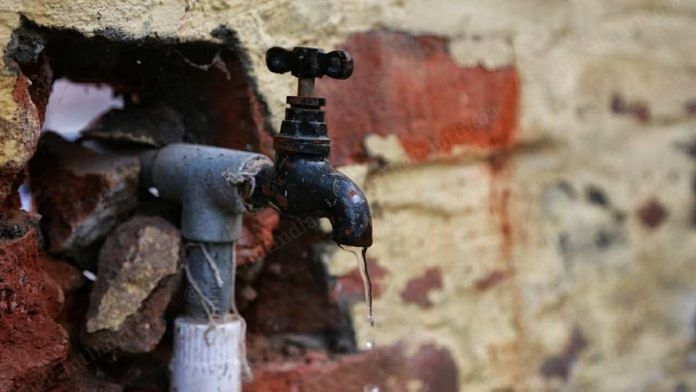New Delhi: As work slowly normalises under the flagship ‘Nal Se Jal’ mission, the central government has decided to prioritise providing potable drinking water to all 117 aspirational districts and 61 districts affected by Acute Encephalitis Syndrome (AES) — a neurological disorder characterised by the inflammation of the brain
Aspirational districts are home to approximately 21 per cent of the Indian population and are also the most backward, with poor human development indicators compared to the rest of the country.
When ‘Nal Se Jal’ was launched in 2019, with an aim to provide drinking water connections to all rural households by 2024, about 17 per cent of the households in India had a functional tap water connection but the number was as low as 8 per cent in these aspirational districts.
In the one-and-a-half years since, the Department of Drinking Water and Sanitation under the Jal Shakti ministry has provided tap water connections to 32 per cent households in these districts, which is a four-time increase, senior officials of the Jal Shakti ministry told ThePrint.
As a result, around 84 lakh households in these districts have been provided with functional tap water connections.
According to a senior official in the Department of Drinking Water and Sanitation, providing tapped water connections in aspirational districts is a big challenge because of capacity constraints.
“A majority of these districts are tribal-dominated, remotely located and among the most backward in the country. In many of these areas, contractors were not ready to work, “ the official told ThePrint.
The Modi government had also launched a special programme in 2018, called the ‘Aspirational Districts Programme’, to improve various social indicators in these districts like health, education and providing clean, drinking water among others.
Also read: After rural homes, govt now plans mega scheme to extend tap water facility to urban homes
Functional tap water in AES-affected districts
The Jal Shakti ministry has also ramped up functional tap water connections in 61 districts that have a high prevalence of AES.
A neurological disorder, AES is characterised by acute onset of fever, altered mental status such as mental confusion and delirium, and/or new-onset of seizures in a person of any age at any time of the year. Bihar, Assam, Uttar Pradesh, West Bengal are among the worst-affected by AES.
In AES-affected districts, households with tapped water connections have increased from 2.8 per cent in 2019 to 30 per cent currently, according to government officials.
“Clean water is an important factor in AES-affected districts. The disease mainly affects malnourished children, who do not have access to clean drinking water,” said the senior official quoted above.
Since the launch of ‘Nal Se Jal’, 7.6 crore rural households have been provided functional tap connections till date.
Goa, Telangana, Andaman and Nicobar Islands, and Puducherry have got 100 per cent functional tap water connections inside their homes. Meanwhile, Daman and Diu, Haryana, Bihar and Gujarat are also set to achieve the 100 per cent target by the end of the year.
Furthermore, while the mission’s work had been hit by the second wave of the pandemic, it has picked up pace now.
“During the second wave of the pandemic, work got affected for two to three months. Earlier, where we used to provide approximately one lakh connections per day, the figure dipped to 30,000 connections per day,” the official said.
“The daily tap water connection being provided now is in the range of 75,000 to 80,000,” he added.
‘Nal Se Jal’ has a total outlay of Rs 3.60 lakh crore. While the central government’s share is Rs 2.08 lakh crore, the remaining Rs 1.52 lakh crore is to be borne by states.
(Edited by Rachel John)
Also read: No govt job if you have over 2 kids, says draft UP population bill, sterilisation to earn reward



